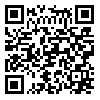Volume 10, Issue 1 (Winter 2022)
PCP 2022, 10(1): 45-54 |
Back to browse issues page
1- Department of Counseling, Faculty of Education and Psychology, University of Mohaghegh Ardabili, Ardabili, Iran.
2- Department of Counseling, Faculty of Humanities and Social Sciences, University of Kurdistan, Sanandaj, Iran. , m.rostami@uok.ac.ir
2- Department of Counseling, Faculty of Humanities and Social Sciences, University of Kurdistan, Sanandaj, Iran. , m.rostami@uok.ac.ir
Abstract: (1694 Views)
Objective: This study examined the role of social desirability, self-esteem, and some demographic variables in predicting university students’ attitudes toward people with physical-motor disabilities.
Methods: The participants in this cross-sectional study were 300 students of Kurdistan University, Sanandaj city, Iran, selected using convenience sampling. The students completed the items in the Google forms of the Marlowe-Crowne social desirability scale (MC-SDS), Rosenberg self-esteem scale (Rosenberg, 1965b), a demographic information form, and the multidimensional attitudes scale towards persons with disability (MAS). The collected data were analyzed using the Pearson correlation coefficients and hierarchical linear regression analysis in SPSS software v. 23.
Results: The results showed significant attitudinal differences in students with different demographic characteristics except for gender and education (P<0.05). In addition, social desirability and self-esteem were stronger predictors of the students’ attitudes toward people with physical-motor disability than each variable alone (P>0.05).
Conclusion: Various demographic variables and other factors like self-esteem and social desirability affect students’ attitudes toward people with physical-motor disabilities. A key implication of the present study is that the role of tested variables could differ depending on cognitive, affect, and behavioral dimensions of attitudes. Researchers must pay attention to this point in future studies.
Methods: The participants in this cross-sectional study were 300 students of Kurdistan University, Sanandaj city, Iran, selected using convenience sampling. The students completed the items in the Google forms of the Marlowe-Crowne social desirability scale (MC-SDS), Rosenberg self-esteem scale (Rosenberg, 1965b), a demographic information form, and the multidimensional attitudes scale towards persons with disability (MAS). The collected data were analyzed using the Pearson correlation coefficients and hierarchical linear regression analysis in SPSS software v. 23.
Results: The results showed significant attitudinal differences in students with different demographic characteristics except for gender and education (P<0.05). In addition, social desirability and self-esteem were stronger predictors of the students’ attitudes toward people with physical-motor disability than each variable alone (P>0.05).
Conclusion: Various demographic variables and other factors like self-esteem and social desirability affect students’ attitudes toward people with physical-motor disabilities. A key implication of the present study is that the role of tested variables could differ depending on cognitive, affect, and behavioral dimensions of attitudes. Researchers must pay attention to this point in future studies.
Type of Study: Research |
Subject:
Rehabilitation
Received: 2021/10/31 | Accepted: 2022/01/9 | Published: 2022/01/1
Received: 2021/10/31 | Accepted: 2022/01/9 | Published: 2022/01/1
| Rights and permissions | |
 |
This work is licensed under a Creative Commons Attribution-NonCommercial 4.0 International License. |





